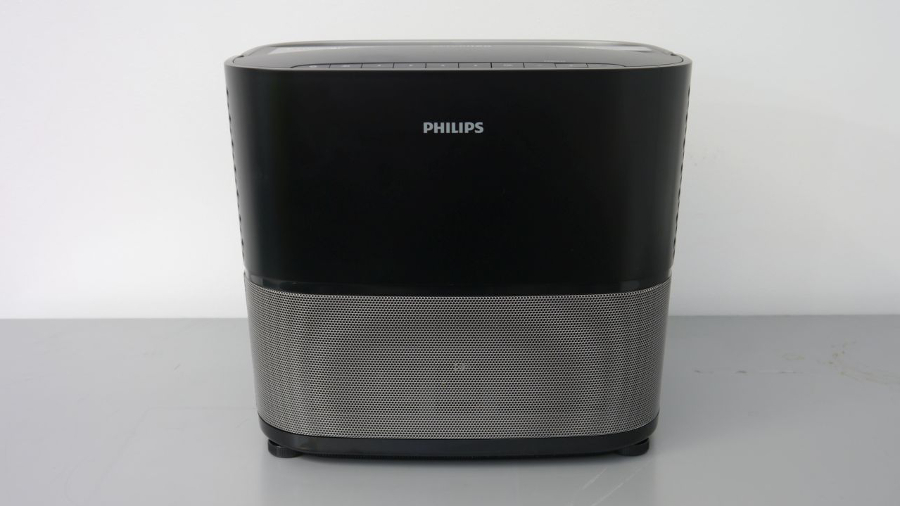Early Verdict
The second-gen Screeneo won’t appeal to everyone, but if you’re looking for a transportable all-in-one projector, this is a solid contender and a model you should consider.
Pros
- +
Very smart design
- +
Produces a good picture
- +
Superior sound quality
Cons
- -
A tad expensive
- -
If only it wasn’t quite so tall
Why you can trust TechRadar
For far too long, projectors were used almost exclusively by enterprises and big organisations either for meetings or presentation purposes.
The rise of ubiquitous connectivity, cheap and reliable videoconferencing solutions, as well as affordable large display units (50-inch and above) have forced projector manufacturers to adapt.
And one area of definite interest to businesses looking for flexibility is the emergence of highly portable, high performance projectors with short-throw capabilities.
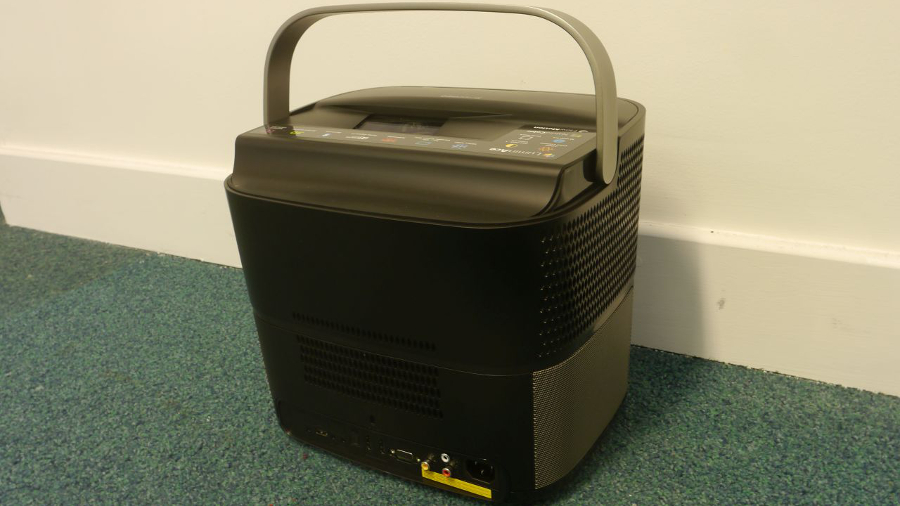
These allow for projectors to be rapidly deployed on an ad hoc basis in a plug-and-play situation, having them operational within seconds.
The Philips Screeneo 2.0 (model number HDP2510/EU) is one of these beasts, and its design is in line with the Dutch hardware vendor’s reputation to come up with bold concepts.
There are cheaper full HD projectors on the market – you will have to fork out around £1,300 (about $1,580, AU$2,090) to buy the Screeneo 2.0 from Amazon for example – but few, if any, will get heads turning the way this model from Philips does.
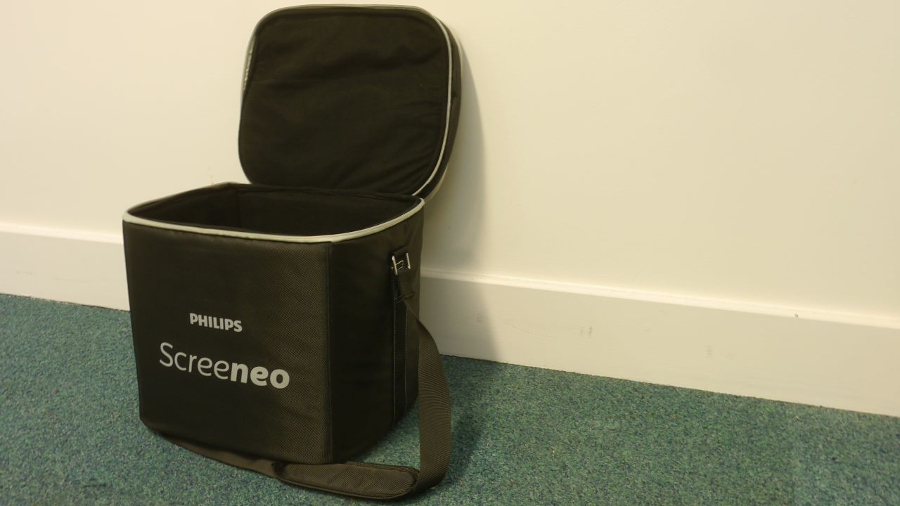
Open the bag (yes – a bag) which houses the projector and you will be surprised to find a device that looks rather like a large beer cooler, complete with a silver-coloured, foldable handle.
The Screeneo has also been described as a bucket or a paper shredder by some of our peers, which gives you a sense of what to expect. In short, it certainly doesn’t look like a projector when you first set eyes on it.
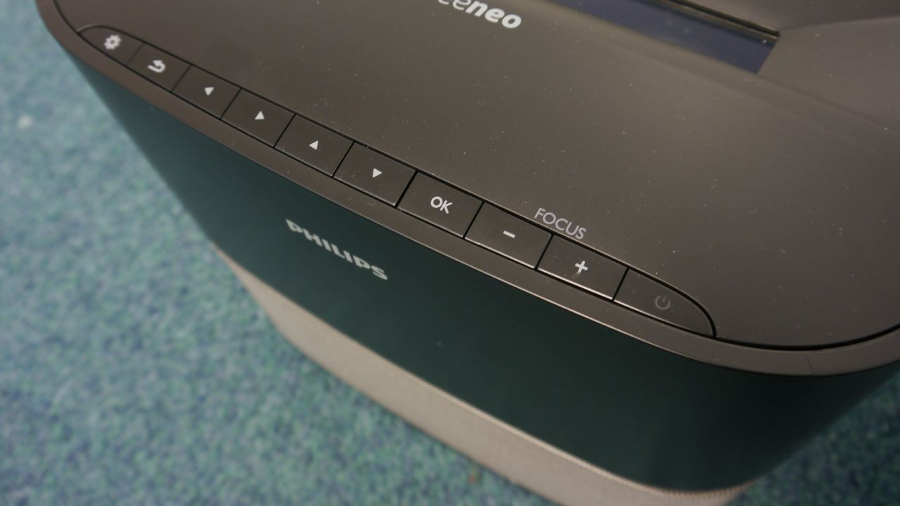
It’s solidly built though, which is great if you plan to move the device around a lot, and it weighs a hefty 8.3kg, which makes it stable on most surfaces.
Since this is an ultra-short-throw projector, it is designed to be placed very close to the screen (or projection surface) – from as little as 10cm away to produce a 50-inch picture.
The problem, however, is that the unit is relatively tall at 28.2cm, so users will need to make sure they’ve got enough vertical headroom should they want to display larger pictures.
Move the device out to 42cm away, and the picture diagonal size mushrooms to 120-inch – around 300cm, which translates to a throw ratio of 0.21:1.
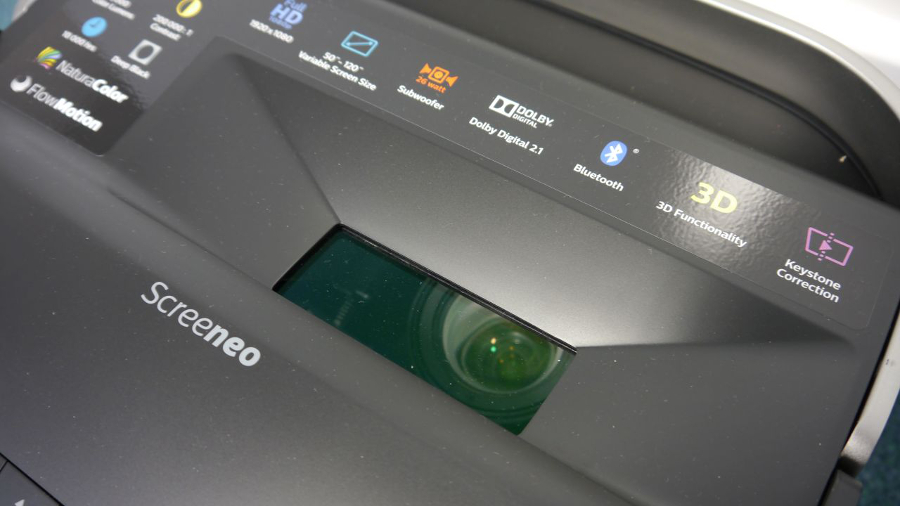
The top of the Screeneo 2.0 is where the lens and the control dashboard are situated; the control buttons are aligned logically with almost no learning curve.
This is a 250W, single-chip DLP projector capable of delivering, on paper, a maximum brightness of up to 2,000 lumens with a contrast ratio hitting 200,000:1.
It can deliver pictures in 16:9 and 4:3 aspect ratios although it won’t be full HD in the latter case. Four projection modes are available: front, rear, front ceiling and rear ceiling.
Philips also packed in some of its own proprietary technology like Flow Motion (which aims to deliver smoother pictures during action scenes) as well as LumiAce and NaturaColor, both of which, Philips claims, should make the image brighter.
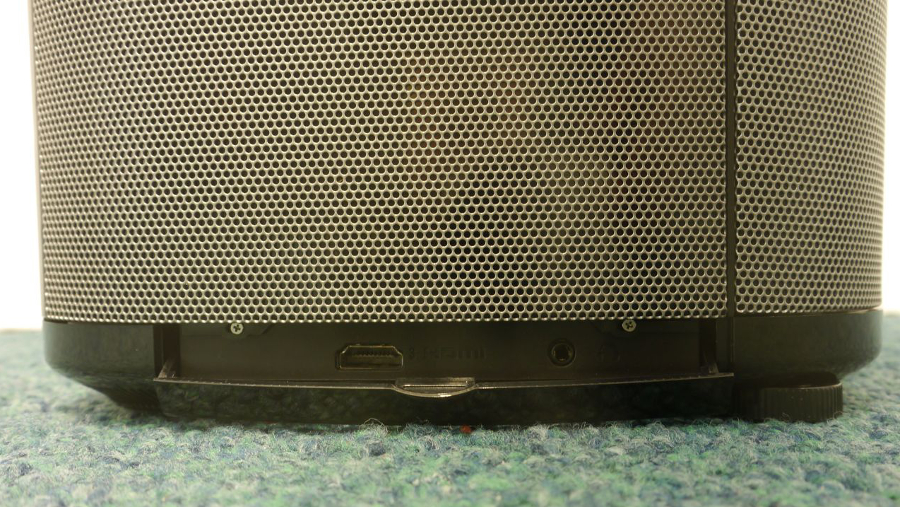
Other specs include a rated 10,000-hour lamp life, support for 3D content (via optional 3D glasses), a 50ms image lag time, a sub-0.1ms response time and more than one billion colours supported thanks to a six-segment colour wheel system.
The lower part of the projector is where the Dolby-compatible speakers are arranged in a 2.1 setup which means that there’s even a subwoofer; altogether, the projector’s sound system is rated at 26W.
The Screeneo comes with three HDMI ports, two located at the front of the projector and one on the side. This makes for a tidy setup, and there’s also a VGA connector, a USB port, a headphone out, AV in, SPDIF optical, Trigger out (for a motorised screen) and Composite.
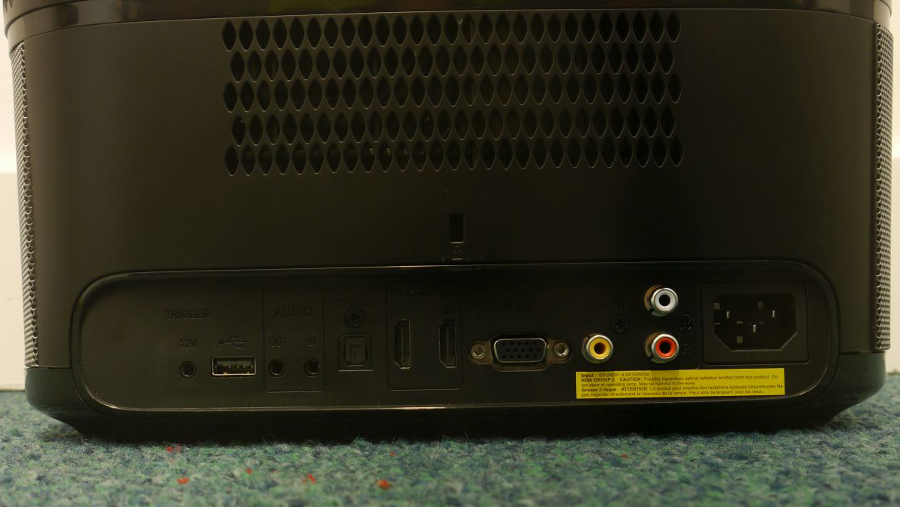
Bluetooth is also available but only to stream audio, although there’s no SD card reader which is a tad disappointing. Also absent from the feature list are any wireless connectivity options, no dongles or Wi-Di option.
If you get hold of one of these, we suggest that you check what firmware your projector comes with. Flashing to the latest one (v2.08 at the time of writing) will help solve a few niggling issues.
As expected, the projector comes with keystone correction, as well as a wall colour correction feature which helps to reduce the impact a colourful paint job might have on the image projected.
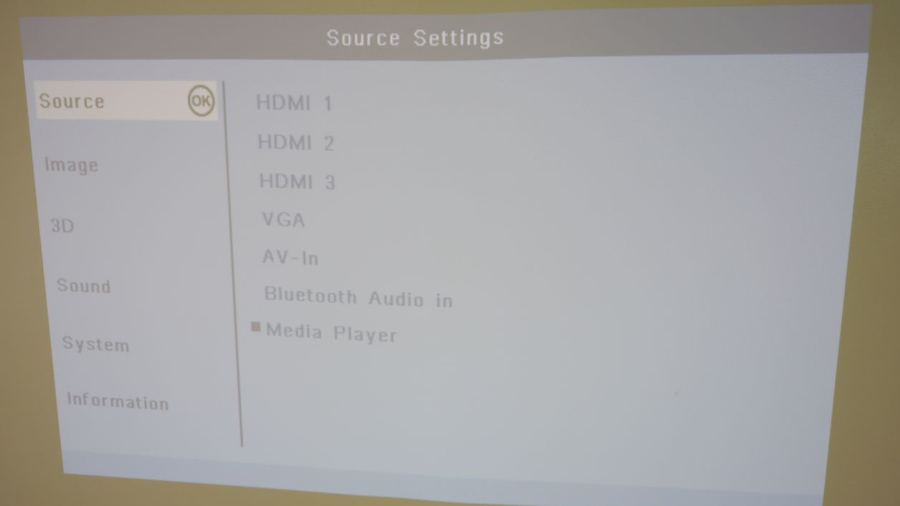
The Screeneo 2.0 consumes between 190W and 300W in use, which explains the use of a fan – there are also plenty of air vents to help cool the radiator.
There is no optical zoom as seen on traditional projectors, which means that any adjustment will have to be done by moving the device itself.
The onscreen display is intuitive to use, helped by the layout of the control buttons. The image produced was bright and crisp, with videos playing without noticeable artefacts. Note that in our testing the brightness was set to 100% and the projector was positioned around 30cm from the wall. The latter didn’t prove ideal as a screen as it was a moderately shiny surface.

There are a host of rudimentary settings (gamma presets, colour and white balance management) which you will need to explore to help fine-tune your viewing experience. But there are no smart features here.
Connecting this projector to a wide range of devices – as you would do in a business environment – proved to be a doddle with no need to reboot any of them. The projector essentially acted as a second screen (the VGA connector proved to be a smart move in this case).
Just make sure you have the right range of adaptors especially if you plan to connect the Philips Screeneo to a newer device, like the new Apple MacBook, which doesn’t have an HDMI connector.

As we’ve already said, in real-life testing the projector performed well and produced a good picture, but it’s also worth noting that the sound quality the device delivered was very impressive too.
On the downside, the remote control might be usable and reasonably complete in terms of options, but it doesn’t have any backlighting which can be problematic in darker environments.
Controls were also a tad slow, and the projector doesn’t support DIVX and MP4 files, but played MOV, MKV and FLV files.
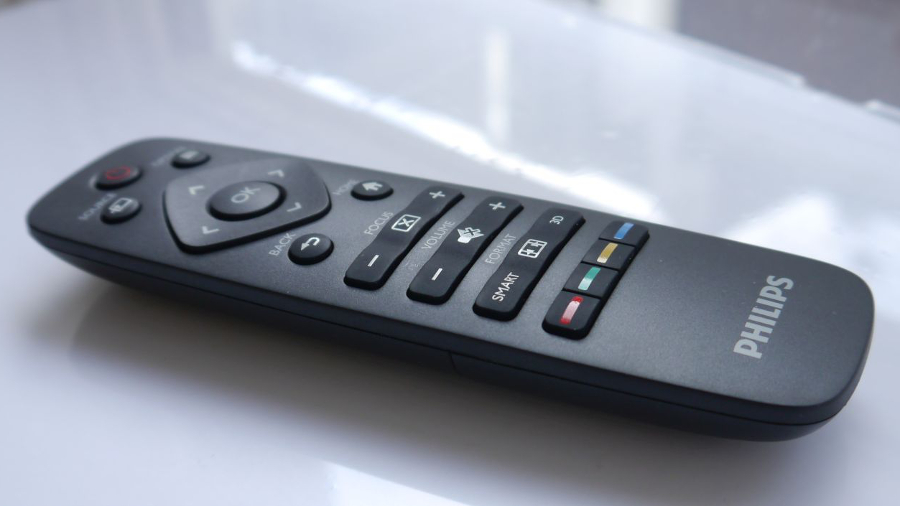
Early verdict
The Screeneo is just great in impromptu situations both in a business and consumer environment. It can be easily transported around to offsite events and meetings, and doesn’t require much setup. You need two cables at most to get it to work.
As an all-in-one projector, it does tick most boxes. It aims to be a great all-rounder and on the face of it, achieves that admirably.
- Here’s our roundup of the best projectors of 2016

Désiré has been musing and writing about technology during a career spanning four decades. He dabbled in website builders and web hosting when DHTML and frames were in vogue and started narrating about the impact of technology on society just before the start of the Y2K hysteria at the turn of the last millennium.
What is a hands on review?
Hands on reviews' are a journalist's first impressions of a piece of kit based on spending some time with it. It may be just a few moments, or a few hours. The important thing is we have been able to play with it ourselves and can give you some sense of what it's like to use, even if it's only an embryonic view. For more information, see TechRadar's Reviews Guarantee.
